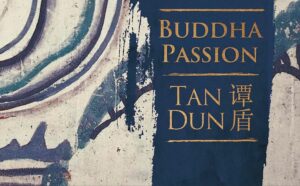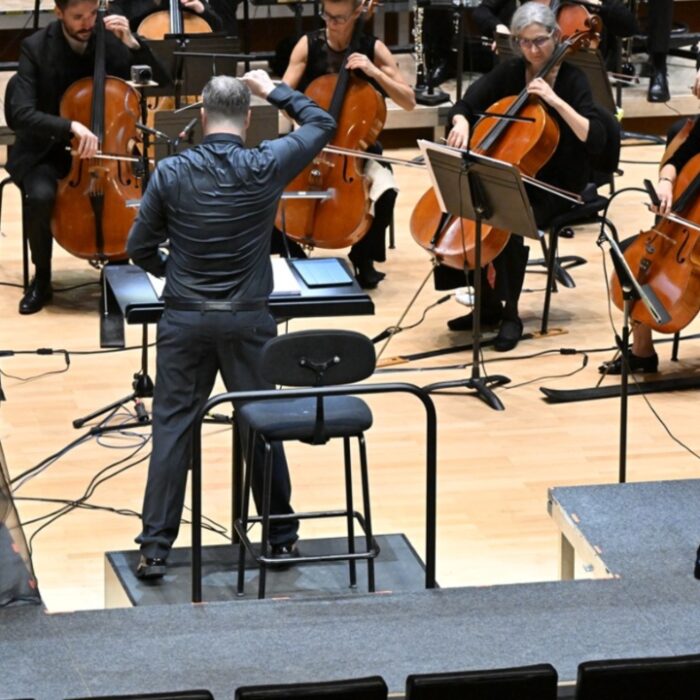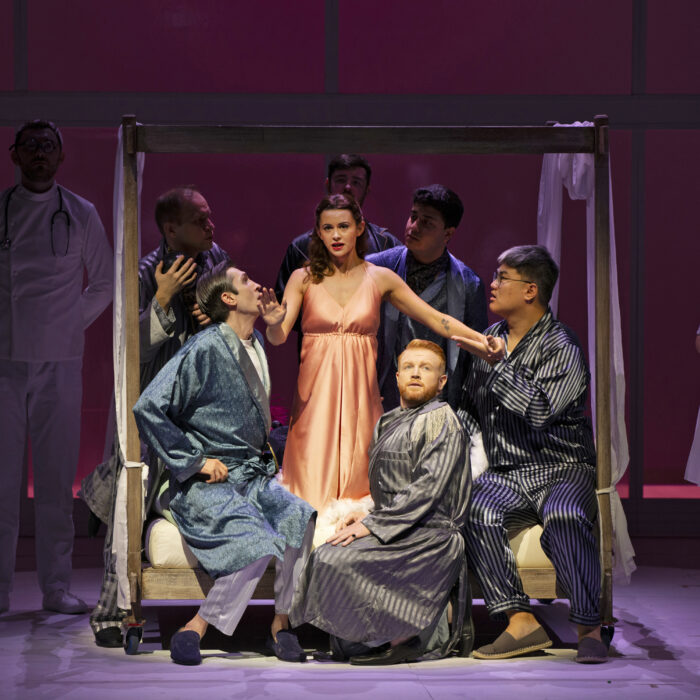
CD Review 2024: Decca Classic’s Tan Dun’s ‘Buddha Passion’
By Joe CadaginThis 2018 “Buddha Passion” by Chinese-American composer Tan Dun, released by Decca, doesn’t feature much of the Buddha. He only appears as at the very beginning and at the end. Then again, Siddhartha Gautama doesn’t have the same centrality in Buddhism that Jesus does in Christianity. As the Buddha himself tells his disciples in Tan’s work, he is neither a deity nor the son of God. Any human has the potential to achieve Buddhahood—the title simply means “enlightened one.”
Rather than a biographically driven narrative akin to a Western Passion Play, Tan’s Chinese-language libretto presents a series of parables inspired by the enigmatic murals of Dunhuang in Gansu Province. Adorning the walls of the Magao temple caves are religious frescoes rendered in earthy shades of brown, yellow, and turquoise. Dating back as far as the third century, these paintings depict celestial beings in a flowing style influenced by Indian art. Subjects are culled from the corpus of Buddhist myths, which Tan adapted for the four inner acts of his six-act pageant: a magical deer is killed by the man she saved; a princess gives up her eyes and arms for a dying woman; a poor fisherman proves his deep understanding of Zen teachings; a woman dies trying to replenish her village’s depleted silkworm stock.
Tan generates a sense of unity among these disparate fables through musical means, reprising a solemn leitmotif of rising fifths that reappears in various guises. Nevertheless, along with the framing acts portraying the Buddha’s childhood and death, it feels like there are one-too-many stories. The composer might have developed each individual vignette in greater depth if he’d limited himself to just three tales, as Offenbach did in “Les contes d’Hoffmann.”
It would be a nightmare to stage in its current state, if one is to take Tan at his word when he labels the work an “opera.” Yet so far, the “Buddha Passion” has only been performed in concert as an oratorio, which seems to better suit the material. Indeed, Bach’s “St. Matthew Passion” was a clear model. Although Tan’s text obviously engages quintessentially Buddhist doctrines—e.g. the innate emptiness of reality—its lessons on sacrifice, suffering, and forgiveness wouldn’t be out of place at a Good Friday service.
Tan has also borrowed the structure of Bach’s passion, interpolating sacred texts and hymns between the action sequences. Each act closes with a meditative four-part chorale, sung in convincing Mandarin and Sanskrit by the German-based Internationale Chorakademie. Familiar baroque touches—e.g. plagal “Amen” cadences and Picardy thirds—coexist alongside the lilting rhythms and characteristic pitch-scooping of sutra recitation. While tired phrases like “fusion” and “Easts-meets-West” have been overapplied to Tan’s music for decades, there’s really no other way to describe the fascinating hybrid he achieves here.
Other attempts at cultural blending are less successful. Critics too often invoke Puccini whenever a contemporary composer strays into vaguely lyrical territory, but the comparison is warranted here. Tan’s writing for the soloists, though mostly pentatonic, is also thoroughly Italianate—there are near-quotations of “Bohème” scattered throughout the score. Yet these passages can sometimes slip into unintentional parodies of verismo schmaltz. Moreover, because his pentatonic melodies are packaged in plush string harmonies, they inevitably smack of Orientalist tropes from “Turandot”—even if Tan is undoubtedly drawing on authentic Chinese musical idioms.
When he isn’t trying to be too self-consciously “operatic,” Tan produces some catchy pop-tinged numbers reminiscent of his film soundtracks. The epic finale of part one, which sets an ode to sacrifice by the late Taiwanese monk Hsing Yun, is driven by a funky brass riff backed by Chinese paigu drums. Admittedly, Tan’s tastes are stuck in the 1980s and ’90s—this chorus exhibits all the feel-good optimism of John Williams, Hans Zimmer, or Andrew Lloyd Webber scores from that era.
And regrettably, Tan’s music has lost much of the experimentalist edge that made his earlier works, such as the comparable “Water Passion after St. Matthew” (2000), so engaging. Many of the trademark touches that were fundamental to his compositional language—e.g. extended vocal techniques and nonstandard percussion, like stones and water—are now relegated to the sidelines as occasional novelties. Traditional instruments, however, are still integral to his orchestrations. As a tribute to the hordes of angel musicians illustrated in the Magao caves, Tan worked in a part for versatile performer Chen Yining. She’s called on to dance while simultaneously executing a pipa solo, as one apsara fairy is shown doing in the murals.
The presence of other instrumental specimens brings up a rather touchy subject, but one that has to be addressed. Captured live in Shanghai in 2019, with the composer conducting the Orchestre National de Lyon, this recording was made in a nation that brutally stifles religious freedom. China has even vowed that it would oversee the selection and approval of the Dalai Lama’s next incarnation. For all its moralizing, Tan’s “Buddha Passion” never once addresses the persecution of Tibetan Buddhists, even as it appropriates the sonic elements of their sacred tantric practices. Male choristers execute overtone chants accompanied by singing bowls and ritual cymbals, specified as “Tibetan” in the score. If Buddhism is represented in this work, it’s a watered-down, party-approved version that doesn’t acknowledge the state of the religion today—the real-life passions suffered by adherents within the PRC.
Granted, as a cultural ambassador between China and the U.S., Tan can’t afford to make political waves. And it’s worth crediting him for other aspects of the “Buddha Passion” that, while not exactly subversive, at least seem to genuinely engage with China’s persecuted minorities. The role of the traveling monk in Act five is taken by mononymic musician Batubagen, a khoomei throat singer from Inner Mongolia who plays in the folk-punk group Hanggai. His buzzing basso profondo, rich in natural harmonics, registers more like a seismic vibration than a human voice. He manages to take certain pitches down an octave, descending to an impossibly low G1 at several points—the G beneath the bottommost bass-clef line.
Batubagen is paired in this act with Sichuan-born Tan Weiwei, a Mandopop star who also incorporates indigenous folk styles. Her character’s swansong is the emotional heart of the piece. The aria’s expansive arc form shows off her fantastically large range and the flexibility of her instrument. Applying goat trills and improvised melismas, she builds up to a climactic, sob-like belt before fading away with a shivering whisper.
Of the classically trained singers, soprano Sen Guo stands out with her equally affecting death aria as the Deer of Nine Colors, the tragic heroine of Act two. There are snatches of Musetta’s waltz in the melody, but Tan probably also had in mind the Liù’s scene of self-sacrifice from “Turandot.” Guo’s subdued, whimper-like delivery as she addresses her betrayer elicits the same sense of pity as Puccini’s character. At the same time, the inordinate number of tearjerker ballads that follow in subsequent acts tends to exhaust one emotionally. So it’s something of a miracle that bass-baritone Shenyang is still able to inspire with the Buddha’s farewell number in the last act, striking a tone of magnanimous reassurance as he grants his disciples a few final words of wisdom.



